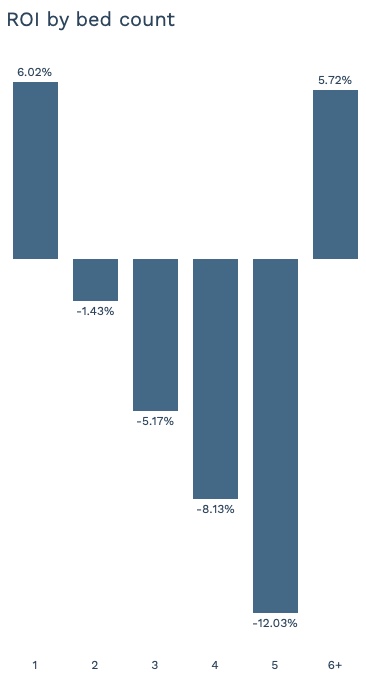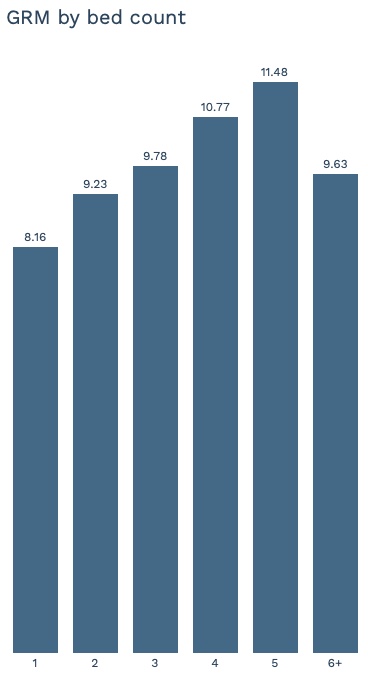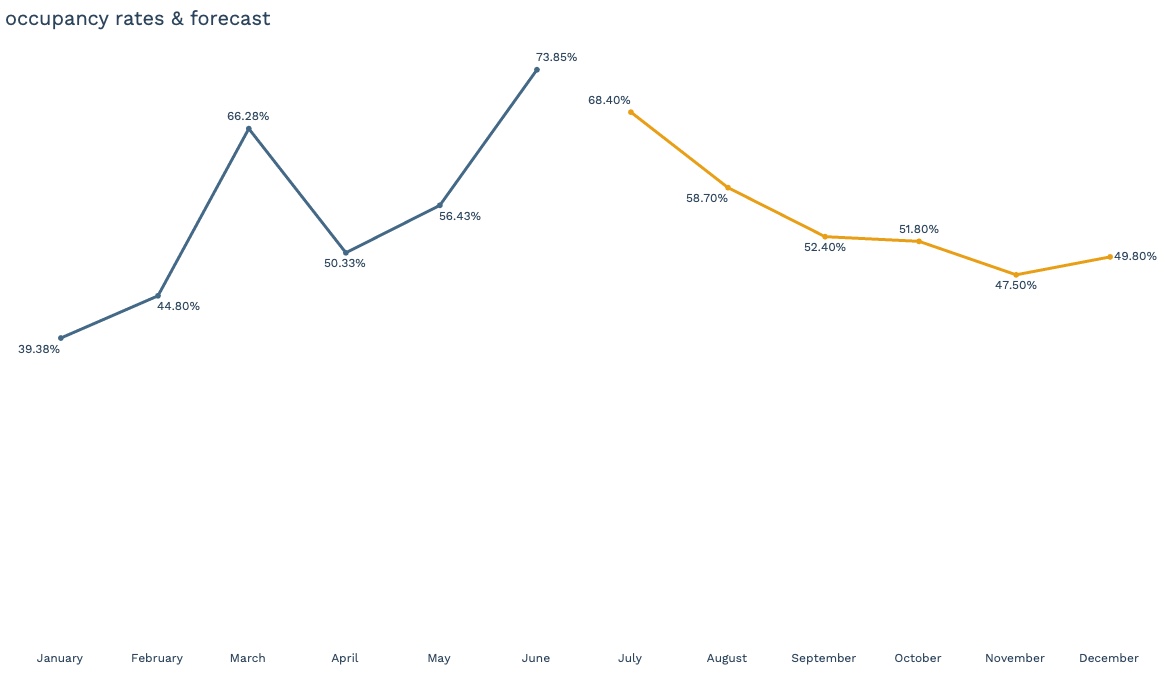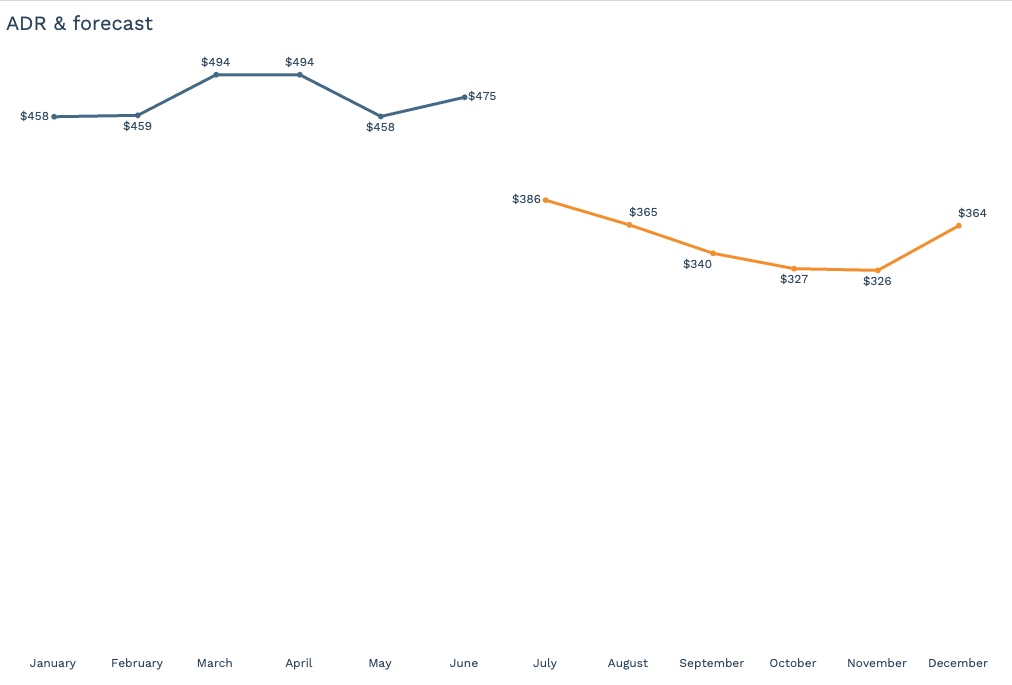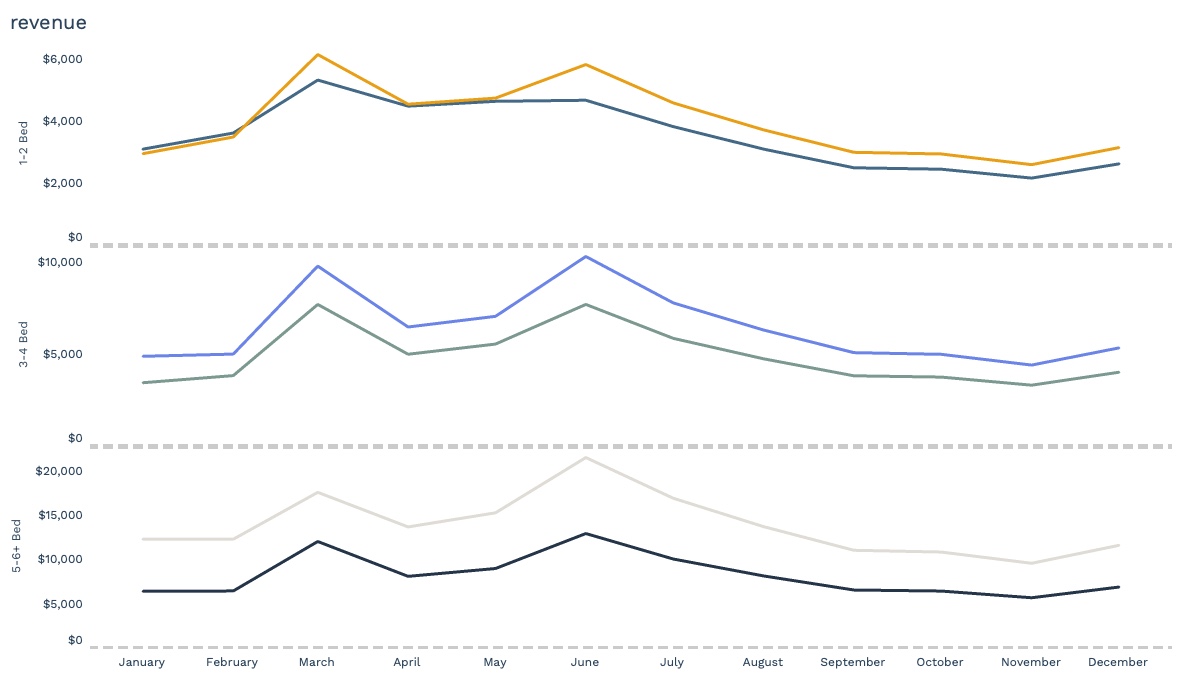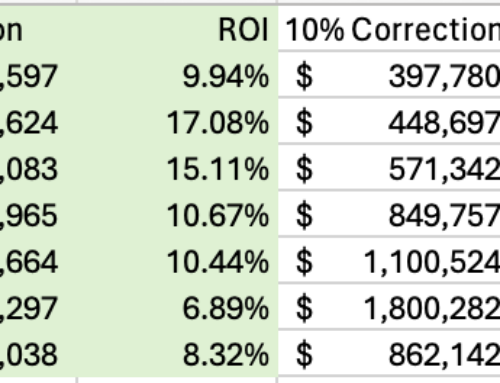
The Smoky Mountains have long been a popular destination for travelers seeking a serene getaway amidst nature’s beauty. In recent years, short-term rentals, particularly Airbnb properties, have proliferated in this region, providing substantial income opportunities for property owners. However, with shifting market dynamics in 2024, many investors are asking a crucial question: “Are Smoky Mountain Airbnbs still making money?”
To answer this, we will delve into the data, including Return on Investment (ROI), Gross Rent Multiplier (GRM), Occupancy Rates, Average Daily Rate (ADR), and Revenue trends, all of which provide insights into the current and future profitability of Airbnb properties in the Smoky Mountains.
Return on Investment (ROI) by Bed Count
ROI is a critical metric for any real estate investment, as it measures the profitability relative to the investment cost. The first chart (ROI by Bed Count) illustrates the ROI across different property sizes.
In 2024, properties with 1-bedroom and 6+ bedrooms are showing positive ROI, at 6.02% and 5.72% respectively. This indicates that smaller and larger properties are currently the most profitable. However, properties with 2 to 5 bedrooms are struggling, with the 5-bedroom properties facing a significant negative ROI of-12.03%. This suggests that while certain segments of the market are thriving, others are underperforming, potentially due to market saturation or mismatched pricing strategies.
Gross Rent Multiplier (GRM) by Bed Count
GRM is a popular metric used by real estate investors to evaluate the profitability of rental properties. It is calculated by dividing the property’s price by its annual rental income. A lower GRMtypically indicates a better investment opportunity.
The GRM chart shows a steady increase from 1-bedroom to 5-bedroom properties, peaking at 11.48 for 5-bedroom homes, before slightly decreasing for 6+ bedroom properties. A higher GRM suggests that it takes longer to recoup the investment, which may explain the negative ROI for 5-bedroom properties observed earlier. Investors should be cautious when considering properties with higher GRMs, as they may indicate a lower return on investment over time.
Occupancy Rates & Forecast
Occupancy rate is another key performance indicator for Airbnb properties. It reflects the percentage of time a property is rented out and directly influences revenue potential.
The chart above illustrates the occupancy rates from January to December 2024, including a forecast for the latter half of the year. Occupancy rates experienced significant fluctuations throughout the year, peaking in June at 73.85%. However, the forecast suggests a downward trend in occupancy rates from July onwards, with a projected low of 47.50% in November. This decline could be attributed to seasonal factors, economic conditions, or increased competition. For investors, understanding these trends is crucial for optimizing pricing and marketing strategies to maintain profitability during the off-peak seasons.
Average Daily Rate (ADR) & Forecast
ADR is the average revenue earned per occupied room per day, a vital metric for understanding revenue potential.
The ADR chart shows a rise in daily rates from January to June, with a peak of $494 in May and June. However, the forecast indicates a decline in ADR from July onwards, with the rate dropping to as low as $326 in November before a slight recovery in December. This trend highlights the importance of dynamic pricing strategies to maximize revenue during periods of lower occupancy.
Revenue Trends by Bed Count
Finally, let’s examine the revenue trends across different property sizes. Revenue is the ultimate measure of profitability, combining both occupancy rates and ADR.
The revenue chart shows distinct patterns across different property sizes. 1-2 bedroom properties experienced a significant revenue increase in the first half of the year, followed by a steady decline. 3-4 bedroom properties followed a similar pattern but with higher revenue peaks. However, 5-6+ bedroom properties showed the highest revenue, with a notable peak in April, though they too faced a decline in the latter half of the year.
Bottom Line…
So, are Smoky Mountain Airbnbs making money in 2024? The answer is nuanced. While smaller (1-bedroom) and larger (6+ bedroom) properties are showing positive ROI and remain profitable, mid-sized properties (2-5 bedrooms) are facing challenges, particularly with higher GRMs and lower occupancy rates. The market dynamics suggest that investors need to be strategic, focusing on optimizing occupancy through dynamic pricing and perhaps reconsidering investments in mid-sized properties unless market conditions change.
Moreover, the forecasted decline in both occupancy rates and ADR in the latter half of the year indicates a potential dip in profitability, making it crucial for investors to plan ahead. By understanding these trends and leveraging data-driven strategies, Airbnb investors in the Smoky Mountains can better navigate the challenges of 2024 and ensure sustainable profitability.
Investors should remain vigilant, continuously monitor market conditions, and be ready to adapt their strategies to maximize returns in this ever-changing market.


